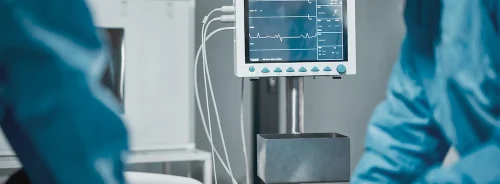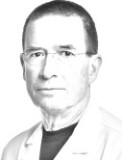ICU Management & Practice, ICU Volume 12 - Issue 1 - Spring 2012
Introduction
Maintaining an intensive care unit (ICU) and providing intensive care for all patients who benefit from it necessitates a high investment in personnel, technology, and material resources within a short time period, and is naturally associated with costs. The complexity of the care processes involved, and the fluctuation in the number of patients needing intensive care at a specific time, make managing intensive care resources very challenging. Having too many resources can be notoriously expensive and can lead to an inappropriate use of ICU beds, while having too few ICU resources prevents timely admission of patients, increases the risk of poor outcomes, and may paradoxically increase costs by unnecessarily prolonging patients’ stay in the ICU. Optimising the whole patient care process—including the pre-ICU, ICU, and post-ICU phases—has the greatest potential for efficient resource use and improved outcomes.
Lessons From the Past
The challenges of ICU management are nothing new. The whole principle of concentrating care personnel and cohorting the sickest patients in one area for more intensive monitoring and care was established over centuries of treating the casualties of wars, epidemics, and natural catastrophes.
The care of patients during polio epidemics in the 1950’s
in Copenhagen, often referred to as the birth of modern intensive care, was a masterpiece
of care process optimisation, organisation and management. Clinical
observations suggesting hypoventilation as the cause of patient deterioration
were confirmed and the problem was treated using a new application of available
technology (combination of tracheostomy with prolonged manual ventilation). A
therapeutic strategy was then developed for large-scale use of such treatment,
and associated decision-makers were convinced to provide the necessary
resources. Furthermore, a multidisciplinary team and the logistics necessary
for long-term treatment of large numbers of patients were introduced. Finally,
quality assurance was undertaken by assessing the outcomes of this care
process.
The subsequent proliferation of ICUs in Europe, North America, and Australasia further revealed the complexity of ICU management. A report from National Academy of Sciences – National Research Council Committee on Anesthesia: Workshop on Intensive Care Units, which was held on 14 October, 1963, in Washington, DC, summarises many problems that are still very relevant (Hamilton 1964). The following provides a brief overview and summary of this report, which can be considered a seminal paper on ICU management.
National Academy of Sciences – National Research Council Committee on Anesthesia: Workshop on Intensive Care Units
In the decade following the polio epidemics, many surgical, medical, and respiratory ICUs had been opened, and the pioneers in the new specialty area faced many novel challenges. Patient management-related themes were heavily focused on treatment of respiratory failure (airway management, humidification, recognition and management of respiratory insufficiency), thus reflecting the major and dramatic achievements during the decade after the polio epidemics. Other clinical themes included characterisation of patient populations in the various participating ICUs (case mix) and infection control—both still very current today. The main management themes discussed included architecture and design of ICUs, organisation, staffing, and training of doctors and nurses.
Many of the contributors were already, or were soon to
become, established and renowned scientists in areas that would play a role in
the future of intensive care medicine, but in the aforementioned workshop it
was their insight into organisational and administrative issues that was most
impressive. From today’s perspective, it is fascinating to note that those
early pioneers pointed out most of the problems related to intensive care that
remain challenging or unsolved still today, almost half a century later: the
role of different specialties in the treatment of a patient with
multidisciplinary problems; the need for specialty training for both nurses and
doctors; the need for attending specialists to be directly involved in and
responsible for patient care. In the words of Dr. D Bates from Royal Victoria
Hospital, Montreal: “The main responsibility for cases should, I believe, rest
with attending staff, since no resident who has not had special training in
this discipline is capable of taking care of these cases.” Dr. J Severinghaus,
University of California Medical Center at San Francisco, who is best known for
his decades-long contributions to our understanding of respiratory and blood
gas physiology, addressed the question of who holds ultimate responsibility for
admitting and taking care of patients in ICUs, and who is responsible for the
general administration of intensive care: an organisational issue still very
current today.
Dr. J Kinney, at the time a surgeon at the Peter Bent
Brigham Hospital in Boston and a future
pioneer in metabolic research in the critically ill at Columbia Presbyterian Medical
Center, New York, pointed out that no single physician can cover a critically
ill patient 24 hours a day for five to six days, a typical average length of stay in many units then (and now), necessitating that responsibility be shared—a
very simple fact still denied in many hospitals today. It was recognised that an
interdisciplinary team approach with defined
leadership was necessary, although some participants questioned this,
favouring that referring physicians have privileges to use intensive care facilities—the
still continuing debate over ‘closed’ vs. ‘open’ intensive care units. Dr. P
Safar, the developer of cardiopulmonary resuscitation as we know it today,
strongly advocated an interdisciplinary, ‘closed’ model.
Safar presented a comprehensive review of his concepts of intensive
care, based on his experience in setting up intensive care services first in
Baltimore in 1958, and subsequently in the Presbyterian-University Hospital in Pittsburgh,
starting in 1961. In Pittsburgh, an interdisciplinary subcommittee was formed
for intensive care. It consisted of representatives from surgery, medicine,
infectious diseases, neurosurgery, nursing, administration, and anesthesia,
with the chief of anesthesia as chairman. The Intensive Care Unit Policy summarised the purpose, admission and discharge concepts;
triage in the case of lack of resources; patient assignment to a single
responsible service; ordering concepts, consultations, definition and use of
guidelines and protocols for various procedures and aspects of care; training; and
delegation of selected complex tasks to highly trained nursing staff. Dr. Safar
summarised the prerequisites for smooth functioning of intensive care as interdepartmental
cooperation, well-defined responsibilities and authority, and the physical
set-up and standardisation of certain procedures—all principles applicable today as well. Moreover, Dr. H Pontoppidan,
another acute respiratory failure specialist, presented an ICU patient
classification system based on the level of care needed.
Past and Present
Management and organisational solutions in intensive care medicine have without a doubt matured. Many ideas and principles of organisation, structure, leadership, and training that were formulated in the 1950’s and 1960’s have been institutionalised, and intensive care medicine has established itself among other specialties, with fights over ownership belonging in the past. One important lesson is that competency based training programmes are the way to develop open access to intensive care medicine.
In 1973 Dr. W Shoemaker wrote a summary of the principles
necessary for organising and managing intensive care medicine, which are still
very valid today: “Traditionally, complicated cases are handled by calling for consultations.
When the complications are few and they appear in staggered fashion, this
approach may function reasonably well. But management of the critically ill
patient with multiple vital organ failures often requires maximum coordination
of a wide range of professional activities and close monitoring of the
patient's course. This can best be attained in a multidisciplinary ICU where
the maximum input of specialties may be coordinated with continuous
surveillance and laboratory support. The patient with multiple injuries and the
acutely ill patient with multiple vital organ failure have many common
physiologic problems. As the same therapeutic modalities are used, the
multidisciplinary team approach is optimally suited to coordinate therapy for
multiple organ failure.”






